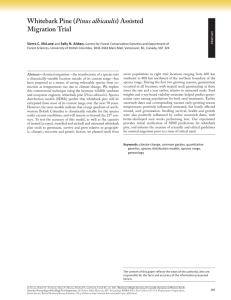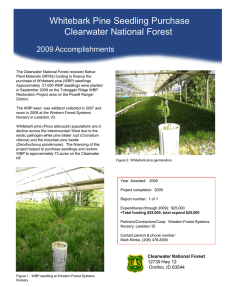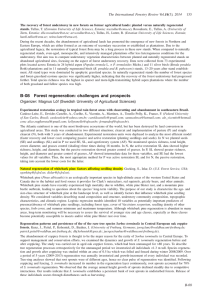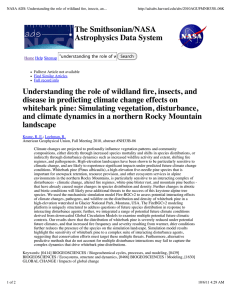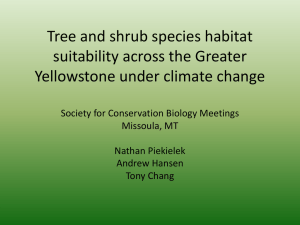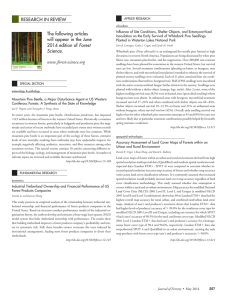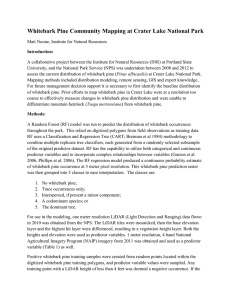Establishment Patterns of Whitebark Pine Following Fire in the Canadian Rockies t
advertisement
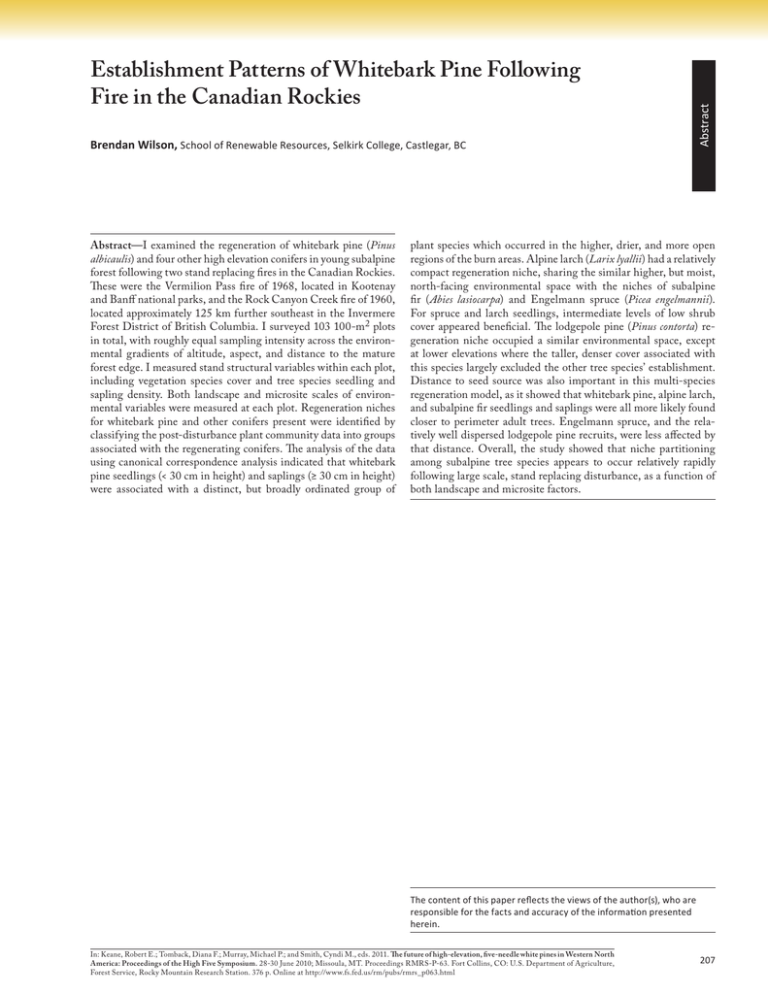
Establishment Patterns of Whitebark Pine Following Fire in the Canadian Rockies Brendan Wilson, School of Renewable Resources, Selkirk College, Castlegar, BC Abstract—I examined the regeneration of whitebark pine (Pinus albicaulis) and four other high elevation conifers in young subalpine forest following two stand replacing fires in the Canadian Rockies. These were the Vermilion Pass fire of 1968, located in Kootenay and Banff national parks, and the Rock Canyon Creek fire of 1960, located approximately 125 km further southeast in the Invermere Forest District of British Columbia. I surveyed 103 100-m 2 plots in total, with roughly equal sampling intensity across the environmental gradients of altitude, aspect, and distance to the mature forest edge. I measured stand structural variables within each plot, including vegetation species cover and tree species seedling and sapling density. Both landscape and microsite scales of environmental variables were measured at each plot. Regeneration niches for whitebark pine and other conifers present were identified by classifying the post-disturbance plant community data into groups associated with the regenerating conifers. The analysis of the data using canonical correspondence analysis indicated that whitebark pine seedlings (< 30 cm in height) and saplings (≥ 30 cm in height) were associated with a distinct, but broadly ordinated group of Abstract plant species which occurred in the higher, drier, and more open regions of the burn areas. Alpine larch (Larix lyallii) had a relatively compact regeneration niche, sharing the similar higher, but moist, north-facing environmental space with the niches of subalpine fir (Abies lasiocarpa) and Engelmann spruce (Picea engelmannii). For spruce and larch seedlings, intermediate levels of low shrub cover appeared beneficial. The lodgepole pine (Pinus contorta) regeneration niche occupied a similar environmental space, except at lower elevations where the taller, denser cover associated with this species largely excluded the other tree species’ establishment. Distance to seed source was also important in this multi-species regeneration model, as it showed that whitebark pine, alpine larch, and subalpine fir seedlings and saplings were all more likely found closer to perimeter adult trees. Engelmann spruce, and the relatively well dispersed lodgepole pine recruits, were less affected by that distance. Overall, the study showed that niche partitioning among subalpine tree species appears to occur relatively rapidly following large scale, stand replacing disturbance, as a function of both landscape and microsite factors. The content of this paper reflects the views of the author(s), who are responsible for the facts and accuracy of the information presented herein. In: Keane, Robert E.; Tomback, Diana F.; Murray, Michael P.; and Smith, Cyndi M., eds. 2011. The future of high-elevation, five-needle white pines in Western North USDA Forest Service Proceedings RMRS-P-63. America: Proceedings of the High Five Symposium. 28-30 2011. June 2010; Missoula, MT. Proceedings RMRS-P-63. Fort Collins, CO: U.S. Department of Agriculture, Forest Service, Rocky Mountain Research Station. 376 p. Online at http://www.fs.fed.us/rm/pubs/rmrs_p063.html 207

